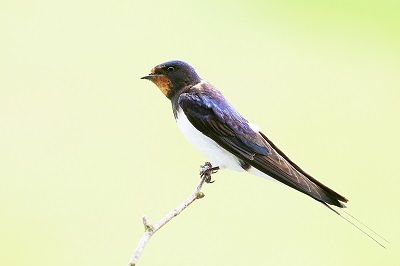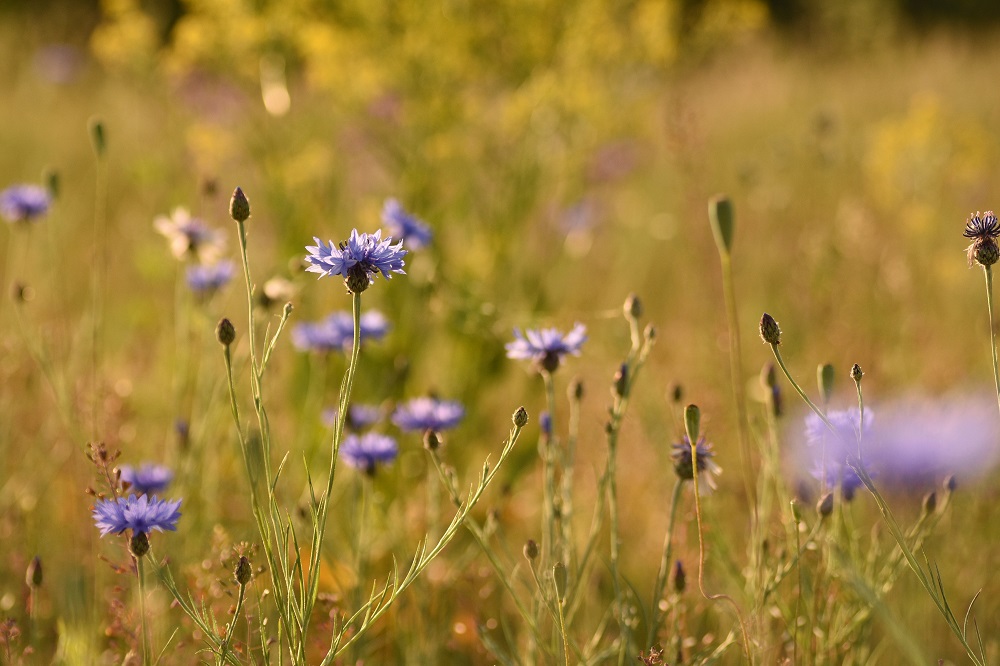Estonian national species: the barn swallow, the cornflower, the wolf, the Baltic herring, and the common yellow swallowtail
Many countries have symbolic national species – birds, animals, or plants – which are used as national symbols, for example on flags, coats of arms, banknotes, and stamps.
Perhaps one of the most famous national species is the bald eagle of the United States. When the country was still young, John Adams, Thomas Jefferson, and Benjamin Franklin thought that the new country needed a meaningful symbol, and the bald eagle fit perfectly – the bird looks majestic, it is powerful and lives long. Congress named the bald eagle a national bird on 20 June 1782, and five years later, it was recognised as the national animal of the United States by other countries as well. The bald eagle is considered the world’s first national species and it can be seen on US banknotes and stamps [1].
One would think that national species with their symbolic status are doing well. However, a recent study by US researchers [2] shows a worrying trend with 35% of the world’s national species at risk of extinction and 45% having declining populations. The main threats to symbolic species are loss of habitats and overhunting. Only 16% of the world’s national species are protected, with most endangered national species living in Africa. The lion, for example, is the national animal of Morocco, Togo, the Gambia, and Sierra Leone, but is no longer found in those countries. But there are also good examples: the United States has put its bald eagle under protection and its population is growing.
Estonian national species
Barn swallow

Estonia’s oldest national species is the barn swallow, who was named our national bird in 1962. The designation of the barn swallow as a national bird is like a response to the national bird campaign announced at the 1960 Conference On Bird Preservation in Tokyo. The International Council for Bird Preservation (ICBP), the predecessor of the current umbrella organisation for bird protection associations, Birdlife International, called on all countries to choose a so-called national bird. The purpose of the call was to spread messages and information on bird protection and bird species with the help of a well-known and beloved national bird.
Teacher and nature writer Kustas Põldmaa proposed the barn swallow as the national bird of Estonia at a meeting of the ornithological section of the Estonian Naturalists’ Society, the predecessor of today’s Estonian Ornithological Society. Tiit Randla, a student at the time, jokingly suggested the parrot crossbill, then still recognised as a subspecies, for the national bird. The third proposal was to choose a sea bird, but in the latter case, no specific species was ultimately proposed.
Cornflower
Jaan Eilart, a nature conservationist and cultural historian who was the chairman of the Estonian Society for Nature Conservation, founded in 1966, played a key role in choosing the cornflower as the national flower of Estonia. In numerous radio appearances, Eilart paved the way for the cornflower, as the black-and-white plumage of the national bird barn swallow would go well with the blue cornflower. In retrospect, it is believed that although Eilart had had the cornflower as a national flower in mind for a long time, it was difficult to get support for the idea in the 1960s due to the reference to the Estonian tricolour – the politically sensitive issue had to be approached very carefully at that time.
The choosing of the national flower began in 1968 in the ETV programme series Tammelehe viktoriin (Tammelehe quiz). In this series, which was created in cooperation between ETV and the Estonian Society for Nature Conservation, people suggested 38 different flowers after being asked for their opinion. The public became aware of the choosing of the cornflower as the national flower of Estonia in the June 1969 issue of the magazine Eesti Loodus.

Baltic herring, common yellow swallowtail, and the wolf
Since 2007, the Estonian national fish has been the well-known Baltic herring. The selection was initiated by the Estonian Association of Fishery, and the naming of the national fish was part of a larger campaign to create a more positive image of fish and fish consumption. The choosing took place in the form of online voting and more than 50,000 people sent in their preference. Baltic herring won the competition by a landslide.
On the last day of 2017, Estonia’s new national symbol became known: the national butterfly was the common yellow swallowtail. The national butterfly is a gift from the Estonian Society of Lepidopterologists for the one hundredth anniversary of the Republic of Estonia. The candidates were pre-selected by the members of the Estonian Society of Lepidopterologists and nine species of butterflies were chosen for the voting: the blue underwing, the drinker, the Camberwell beauty, the moorland clouded yellow, the clouded Apollo, the common brimstone, the garden tiger moth, the eyed hawk-moth, and the common yellow swallowtail. All were accompanied by a photograph and introduction for the online voting. The common yellow swallowtail was declared the winner [3].
Our newest national species is the wolf, who was declared the national animal in 2018. Organisations such as the Estonian Theriological Society, the Estonian Society for Nature Conservation, the Estonian Sheep and Goat Breeders Association, etc. were behind the selection of the wolf. When choosing the wolf, it was pointed out that there are no forest-related species among the Estonian national species. The wolf is also tough, durable, and smart, as well as brave in defending their family and territory, values privacy, and loves their family, thus being suitable to symbolise Estonians.
The wolf as a national animal also symbolises the balance between agricultural and forest life, which has shaped the natural face of Estonian culture for many centuries. The wolf is a universal type of indicator: it measures the health of the forest and reflects the Estonians’ understanding of the integrity of nature [4].
Limestone
In addition to national species, Estonia also has a national stone – limestone – that had a long selection process. Limestone is a well-known building material that was more consciously valued in public space in the second half of the 1970s, when architect Raine Karp used it in several new buildings in Tallinn. The idea to declare limestone the national rock came from geologist Rein Einasto in 1981.
A few years later, Lennart Meri gave a presentation in which he emphasised the importance of limestone alvars in local agriculture and animal husbandry. A public proposal to name limestone the national rock of Estonia was made at the first Estonian limestone conference in 1990. At the next two conferences, the national rock was discussed, after which the Geological Society of Estonia and the Estonian Society for Nature Conservation prepared a proposal for the Supreme Council of the Republic of Estonia to add limestone as a symbol of our permanent survival to the list of our national symbols.
Last modified: 20.03.2024
[1] A complete list of national animals from around the world (Animalsake.com)
[2] University of Miami Rosenstiel School of Marine & Atmospheric Science. "Increased protection of world's national animal symbols needed, suggests study: Scientist found 35 percent of world's national animal symbols are threatened with extinction." ScienceDaily. ScienceDaily, 24 May 2017.
[3] Selin, A. 2018. Pääsusaba, meie uusim rahvussümbol. Eesti Loodus 2/2018, lk 22-23.